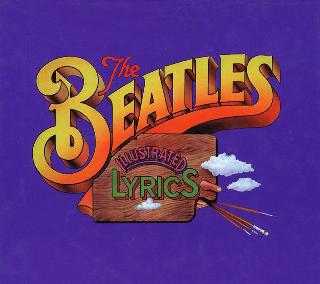Index
Home
Vorige
Helter Skelter
Composer(s) : Lennon and McCartney
Year : 1969
Chords/Tabs: Helter Skelter
Notes on "Helter Skelter" (HS)
KEY E Major
METER 4/4
FORM Intro -> Verse -> Refrain ->
Verse -> Refrain -> Refrain (Instrumental) ->
Intro -> Verse -> Refrain -> Outro (w/double fadeout)
GENERAL POINTS OF INTEREST
Style and Form
- The style of this song is essentially bluesy in spite of its avoidance
of strict 12-bar frames and I-IV-V harmonies. The form is slightly
unusual with its midstream repeat of the intro and double fadeout outro,
but nothing we haven't seen them use before in songs as diverse as
"Thank You Girl" and
"I Am The Walrus," and
"Strawberry Fields Forever."
- And yet, crank this one up some late night when you're home alone
and all the lights are off, and it's guaranteed to raise the hair on the
back of your neck; to scare and unsettle you. And that phenomenon has
absolutely nothing to do with what knowledge you do or don't possess
about the song's bizarre connection with Charles Manson.
- You have to look beyond the form and style here to the lyrics, vocal
performance, and recording production in order to discover the roots
of this song's sinister effect.
- Picture yourself, for starters, in an intimate one-on-one with the
narrator; his words of love encompassing a relentless, shifting
panorama of neurotic unpleasantnesses including, in approximate
order of appearance:
Obsession/Compulsion:
Nagging, noodging insistence:
- Do you, don't you ...
- Will you, won't you ...
- Tell me, tell me, tell me, come on, tell me ...
Disparaging criticism:
A barely concealed uncurrent of violence:
- You don't need a 20+ minute long outtake in order to appreciate the
obsessive nature of the song. If anything, you may find yourself with
a headache just trying to imagine it.
Melody and Harmony
- The blues feeling is created almost entirely by the blue 3rd in
the vocal part, sort of the quarter tone in between G natural and
G#.
- The tune is almost 100% pure pentatonic in mode (D-E-G-A-B). The
only exception is the C natural appoggiatura at the end of the
intro sections; i.e. the first note of the "yeah, yeah, yeah .."
phrase.
- The small number of chords and the slow pace at which they change
conveys a primitive, pre-vocal subtext.
- No V chord ever appears here; the complete harmonic duties being
assigned to I, bIII, and IV. Compare this to "Back in the USSR,"
and also note the cross-relation created by I versus bIII.
Arrangement
- Paul's savage vocal delivery effectively amplifies the impact of
the lyrics. It's pretty loud throughout, but rather nuanced in
its own way if you bother to trace it, with patches of yelling,
screaming, sputtering, and (my favorite), insidious laughing.
- Add to this, the noisy, metallic, mechanical sounding mix on the
backing track; layed down in the red zone and mastered equally close
up for maximum punch. One almost flinches before it the same way you
move back a step from the edge of the subway platform as the train
comes into the station. The much quieter early take of the song,
heard on A3, still packs a punch by virtue of the lyrics and lead
vocal, but this brutal dimension of the finished track is entirely
missing.
- And what, indeed, would a Beatles track be, no matter wigged out it is,
without some choreographed layering in the arrangement:
- Intro: Staggered entrance of lead vocal, drums and bass.
- Verse 1: Backing vocals enter in the *second* phrase.
- Refrains: All feature the signature downward guitar scales. The
instrumental refrain is the only one to include, at the end, a
flash of the backing vocals.
- Verse 2: Backing vocals appear in both phrases.
- Midstream intro: includes the full ensemble, this time.
- Verse 3: Add a lead guitar lick for the first phrase.
- Outro: Stop chord change, but add special effects and stir.
SECTION-BY-SECTION WALKTHROUGH
Intro
- The intro is one long phrase of 12 measures, with the first note of
the track being the four->ONE pickup to the first measure, and the
lead vocal coming in as a longer pickup to measure 3:
upper voice 1 |E |- |- |- |- |- |
upper voice 2 |D |- |- |- |C# |- |
|E |- |- |- |A |- |
E: V-of-IV4/2 IV6/3
|C |- |D |- |E |- |
|C |- |B |- |G# |- |
|C |- |G |- |E |- |
bVI bIII I
- As if you needed additional phatic cues, the downward chromatic
line that runs through the intro helps send a message, from the very
beginning, that we're on a sort of descent to hell.
Verse
- The first verse is two measures longer than the others, lingering
on the first chord and weighing in at four-square 16 measures:
--------------- 2X --------------
|E |- |- |- |
E: I
|- |- |G |- |
bIII
|A |- |E |- |
IV I
- The other verses tighten things up a bit by moving to bIII a couple
measures sooner, but this curtails the section lengths to an awkward
14 measures:
--------------- 2X --------------
|E |- |- |- |
E: I
|G |- |A |- |
bIII IV
|E |- |
IV
Refrain
- The refrain is eight measures long in a simple AA form, followed
by a four measure vamp on the I chord.
--------------- 2X ------------- ------ 2X ------
|A |- |E |- |- |- |
IV I
- Note how the vamp is ommited at the end of the instrumental
section; a pace-tightening effect similar to the shortening of
the second and third verses.
Outro
- The mix of this song on the mono version of the White Album
strangely has only the first fadeout. The putative authority of
the mono album version notwithstanding, I'll side here with the
stereo version because of the "value added" by its longer outro.
- The double fadeout strategy, especially as it is played out in
electronic effects and musical improvisation over a static harmonic
background, begs for comparison with
"Strawberry Fields Forever."
- But the even more apt connection is to be made with (surprised?)
"Hey Jude."
Consider just how large a quotient (~40%) of the track's
overall duration is invested in the outro, and notice how the formal
effect of the switch to static harmony is analogous to the switch to
the mantra-like modal chord progression in the outro of the latter song.
- Our outro here breaks down into six sections. Keep in mind the
time scale of the song proper (e.g. ~20 seconds for a verse section)
when sizing up the overall formal thrust of the outro.
- Section 1 - [2:33 - 2:55] - Transition out of the song proper.
Paul's singing and the downward lead guitar solo are still very
much in evidence.
- Section 2 - [2:55 - 3:09] - A sudden halt in the rhythm, with lots
of guitar noise effects and what sounds like muffled studio chat in
the background.
- Section 3 - [3:09 - 3:42] - Rhythm resumes, lots of drums, bass guitar
and guitar noise, but the vocal and lead guitar parts are now gone for
good; slow fadeout to literally "niente" for 1 second.
- Section 4 - [3:42 - 3:58] - Slow fade in on what sounds like a
straight continuation of what had just been faded out; comes back
to full volume.
- Section 5 - [3:58 - 4:15] - Slow fadeout again after sustaining full
volume for ~8 seconds; this time, we do not disappear completely.
- Section 6 - [4:15 - 4:29] - Slight rhythm change, then halt, then rapid
fade-up for final drumbeats, noise, "blisters on my fingers" and
the last guitar noise bouncing instantaneously from left to right.
SOME FINAL THOUGHTS
- Macca's masquerade here reminds me of someone I went to
high school with. This fellow liked to mimic and impersonate;
friends, teachers, characters from movies and TV, even some very
strange ones he made up all by himself.
- He was almost too good at this sort of thing; often very amusing,
but at other times a bit tiresome and unrelenting. Once in a while,
in fact, he'd come up with someone or something that was just too
strange and in pathetically bad taste, and for a moment you'd worry
that maybe this time he'd gone insane and would not be able to ever
snap out of it.
- Anybody else out there go to school with this guy?
Regards,
Alan (awp@world.std.com)
---
"I'd ask you meself only I'm shy." 060798#150
---
Copyright (c) 1998 by Alan W. Pollack
All Rights Reserved
This article may be reproduced, retransmitted, redistributed and
otherwise propagated at will, provided that this notice remains
intact and in place.
Ook op The Beatles [White Album]:
(c) 2024 Serge Girard


 (c) Alan Aldrigde, The Beatles Illustrated Lyrics
(c) Alan Aldrigde, The Beatles Illustrated Lyrics